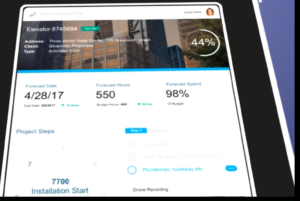
Inside SAP’s Data Analytics Startup

(Casimiro PT/Shutterstock)
When Helen Arnold agreed to move 6,000 miles from Germany to Mountain View to head up SAP Data Network, the longtime SAP executive faced some big challenges. Not only was she bootstrapping a data analytics software firm to help Fortune 1000 clients digitally transform themselves – a sizable hurdle in its own right — but she needed to address big cultural differences between Silicon Valley and Walldorf.
SAP Data Network opened for business in May 2017 with the goal of leveraging a mix of SAP software like SAP Data Hub, Leonardo, and HANA, along with open source data science tools and professional services, to help clients build their own transformational data products. By standardizing on reusable cloud-based software components – and even reusable data feeds, where available — the company seeks to help clients build innovative data products in a matter of weeks or months, rather than the years it often takes for organizations that are starting from scratch.
So far, the startup has worked with about 40 clients, most of which are companies that use SAP’s well-regarded ERP suite. One of those early clients is Schindler, the Swiss manufacturer of elevators and escalators. According a video on SAP Data Network’s website, the company built a tablet-based dashboard that allows Schindler managers to monitor elevator installations in real time and be able to predict when problems will occur. The product even uses augmented reality to ensure the elevator fitting adheres to regulatory and security standards.
It’s still early days for SAP Data Networks, which SAP seeks to operate as an independent entity — but one with the built-in advantage of having a 91,000-person technology behemoth behind it. While there have been challenges moving from Walldorf, which Arnold says is “in the middle of nowhere,” she clearly relishes her move to the cradle of business-disrupting technological innovation.
“I have the best job,” Arnold said during an interview at the Data Governance and Information Quality (DGIQ) conference held last week in San Diego, California, where she delivered a keynote address to a few hundred attendees. “It’s all about innovation. It’s all about the future.”
While Arnold clearly holds Walldorf in high regard, she says it wouldn’t have made sense to attempt to build SAP Data Network in SAP’s hometown. “It’s such a partner ecosystem play that we need to build up, so therefore we go,” the 22-year SAP veteran said. “I want to have top-notch partners, and that is much easier in Silicon Valley” than in Walldorf.
The job market for data scientists – a critical element for SAP Data Network — is also better in Silicon Valley, which is another reason SAP based its data analytics there. One of the first things Arnold learned upon her arrival was that competition for data science talent was fierce. “There’s is a Google and an Amazon and an Apple. So SAP is not on top of their minds, of course,” she said. “But [Germany] is the other way around. They are loyal, compared to here.”
Eventually, Arnold hopes to have a 10-person executive team working for her at SAP Data Network’s headquarters in Palo Alto. The business plan calls for leveraging professional services from the mothership SAP where available, and also tapping the resources of the rich partner ecosystem too.

SAP Data Network helped Schindler build a data analytics dashboard to improve elevator installations
The company aims to make use of machine learning and AI technology to find insights hidden in data collections, which could be transactional data generated in the S/4 ERP system or weather data collected by the government. Finding innovative uses for non-standard data types is a big part of modern data analytics, and it’s something that SAP Data Network counts as a core competency.
“The data pipeline is the beating heart of your application and that data pipeline needs to be continuously self-learning,” Arnold said. “So it’s not like a one-off and I ship it. I need to have…this continuous [learning] process.”
While SAP Data Network hopes to leverage its independence to try new ideas and grow quickly, it also will operate as a research arm for Walldorf as the company tries to improve its core ERP systems. There are many business processes that could be automated through machine learning, and SAP aims to leverage the learnings from SAP Data Network into its core business suite.
There are other cultural differences between Walldorf and Silicon Valley that took some getting used to for Arnold. While the German’s exacting approach to engineering results in beautiful vehicles and highly effective ERP systems, it doesn’t necessarily mesh well with the fast-paced data analytics development practiced in The Valley.
“SAP’s business model for 40 years was, once a year, we ship a release and every release has been worked on tested and validated etc.,” she said. “In Germany, we have this engineering approach where they say ‘It needs to be 100%.’ I say ‘No it doesn’t have to be 100%. Eighty percent is good enough.’ It’s just so different.”![]()
Silicon Valley is the hub of technological innovation today, and just being there can help one to know what’s feasible and what’s not, Arnold said. The company’s use of augmented reality and its work with Bitcoin place it on the cutting edge of technology.
But playing with technology for technology’s sake doesn’t pay the bills, and SAP Data Network is focused on delivering solutions that can help companies move the needle against their competitors – hopefully sooner than later.
“At the end of the day, I can tell you it’s about a commitment to a business outcome,” Arnold said. “We are engaging with CEOs and chief transformation officers and strategy officers. They bring us in in order to show how quickly innovation can be done.”
Related Items:
Geospatial Data Moves to SAP HANA
SAP Combines In-Memory Engine With Hadoop



























